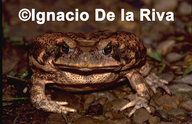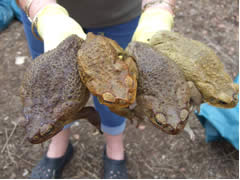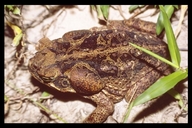The Most-Traveled Cane Toad
Lookin' like a cane toad... mug shot identification.
Questions answered (and bookmarked) on this page:
Describe the appearance of a cane toad.
How can I identify cane toads from other toads in my area?
Are males and females
identical?
The mug shot: First, consider the appearance of a cane toad. Cane toad eggs are black. Cane toad tadpoles are completely black and between 1 and 2.5 cm in length, with tail length equal to the body length.
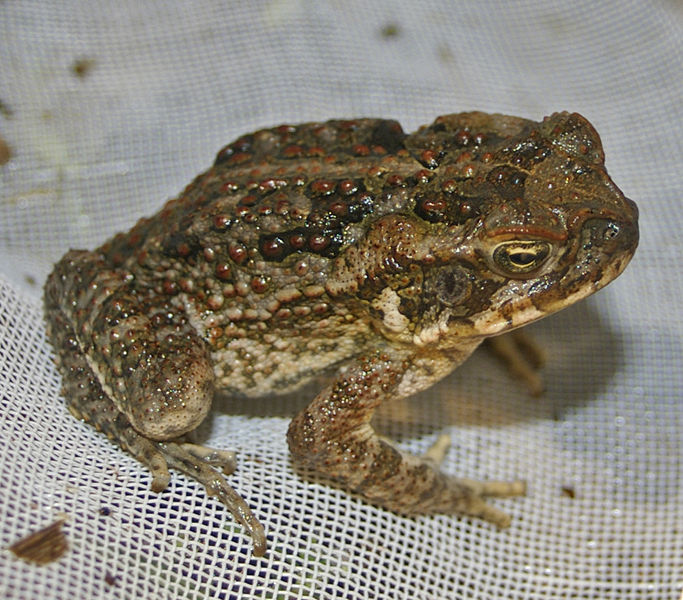 New metamorphs are about 1
cm in size and lack large
parotid glands. They have relatively narrow
bodies, broad heads with blunt-snouts and lateral nostrils, and
tend to be slightly
greenish--but vary in color.
Both metamorphs and adults have unwebbed fingers (front
feet), moderately webbed toes and callouses (on
back feet), light colored bellies, horizontal pupils, and have
many warts on their backs. Warts on the legs
are smaller than warts on the back, and in males,
each wart has at least one spike protruding from it.
New metamorphs are about 1
cm in size and lack large
parotid glands. They have relatively narrow
bodies, broad heads with blunt-snouts and lateral nostrils, and
tend to be slightly
greenish--but vary in color.
Both metamorphs and adults have unwebbed fingers (front
feet), moderately webbed toes and callouses (on
back feet), light colored bellies, horizontal pupils, and have
many warts on their backs. Warts on the legs
are smaller than warts on the back, and in males,
each wart has at least one spike protruding from it.
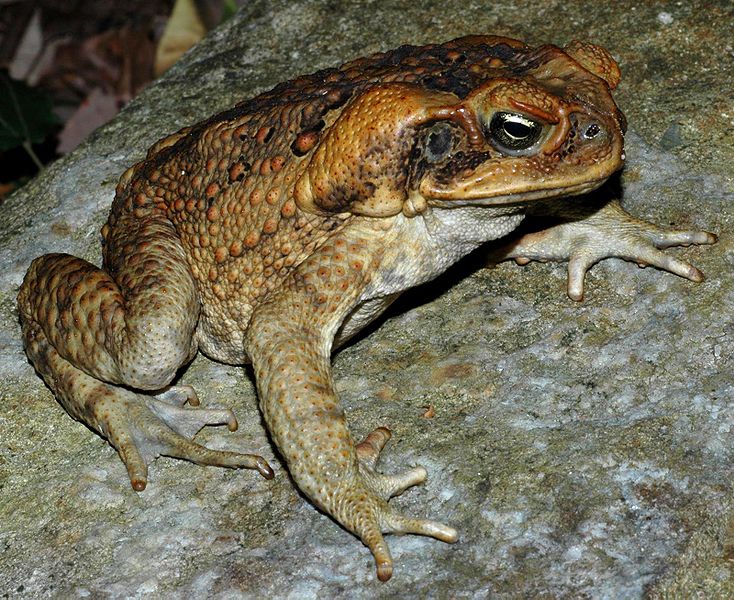
There is a large ridge above the eye and often a less
prominent, more incomplete ridge below the eye.
The ridge under the eye runs to the tip of the eye and
then along the side of the flat portion of the skull towards the
snout, where it merges with the ridge from the other eye
Differentiating a cane toad from other
anurans can be (sometimes!) fairly easy but depends upon where
the cane toad is located. It is confused with
different species depending upon whether the toad is in
In 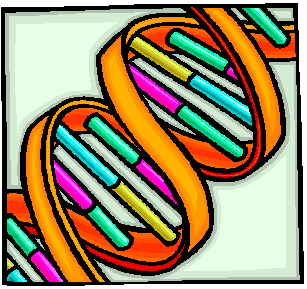 ne toad is
angled over the shoulder. In
ne toad is
angled over the shoulder. In
Always lookin' sexy, adult cane toads have been most flatteringly described as “looking like mobile cow patties”, as they often have widths that are 75% their length. (Do remember the picture up the page...the toad does kinda looks like a cow patty.) Hence a large toad may be 9 in (23 cm) long by 7 in (18 cm) wide and weight 2.2 pounds (1 kg). In areas of high toad density, toads attain smaller adult sizes than they would in less populated areas. Females are larger than males. Females tend to have backs that are more mottled and darker in coloration, exhibit a light colored stripe down the spine, and be less bumpy than males. The warts of females tend to be larger and less uniformly distributed along then back. During breeding season, the male tends to exhibit the keratinized thumb patch known as a nuptial pad. However helpful the above characteristics may be in suggesting the gender of the toad, none definitely identify a male from a female. Indeed, short of dissection, the best way to identify a male from a female is by observing two vocal sac openings on the mouth floor, under the tongue.
Above: On the left are males; note the lack
of strip down the back.
The female is pictured on the right (due to copyrights, I cannot
make the picture larger-sorry!).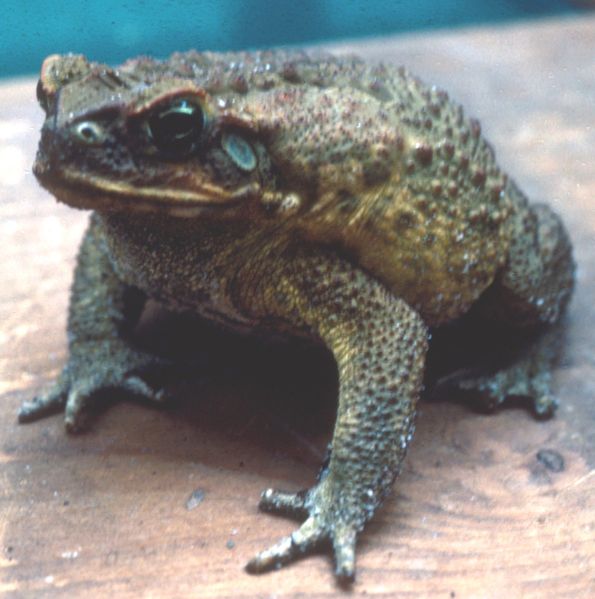
Hmm. Well, if you can sorta identify these toads, you're almost done with what I have to offer. Try Toad'ly habits if you want amusing facts. If you're hardcore on toad history and want to know some evolution, try Tree of Life.
